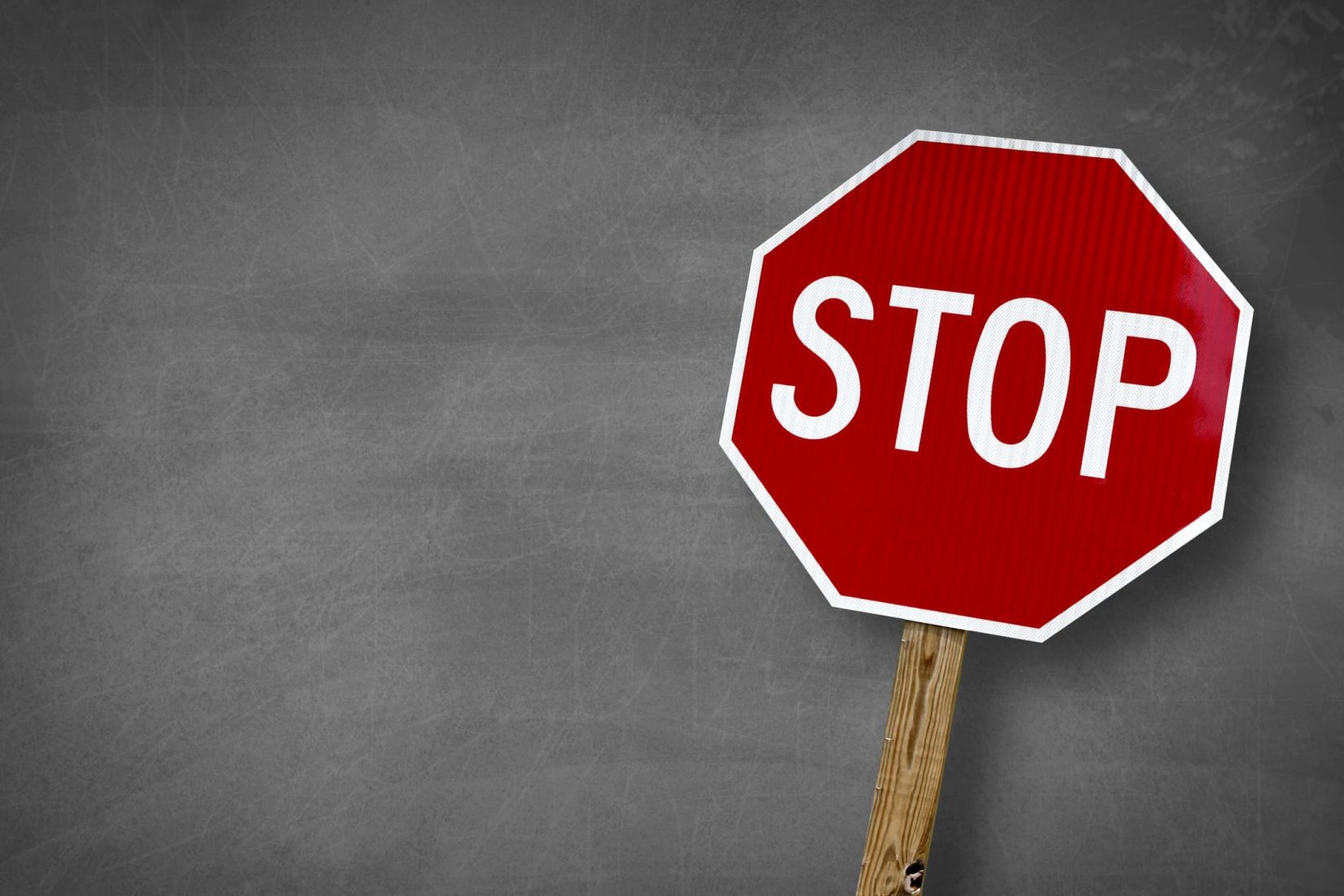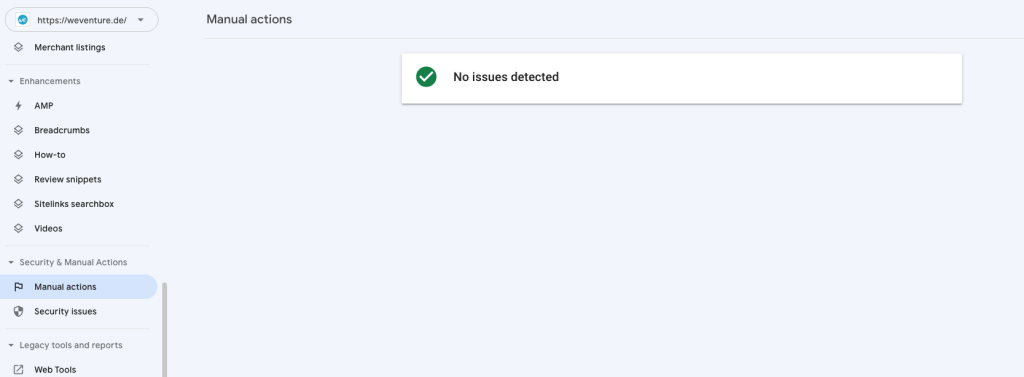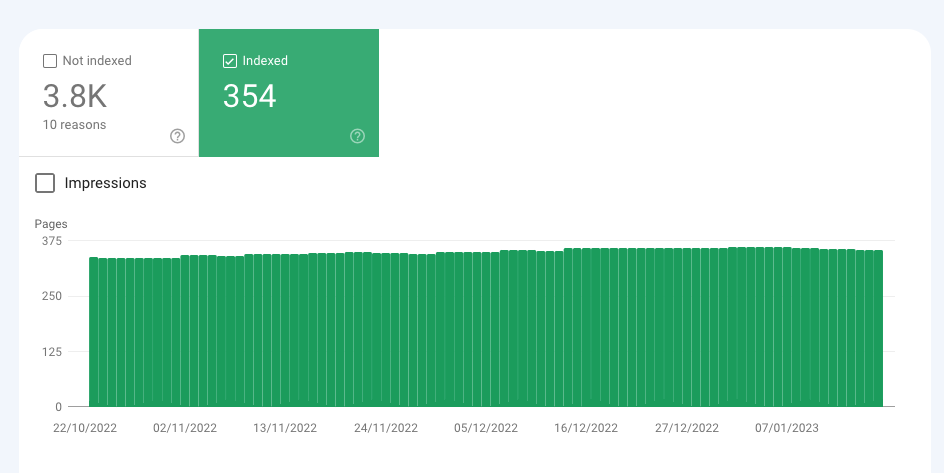

Google Penalties are no walk in the park and the nightmare of many SEOs. They negatively affect your website, which can ultimately lead to lost sales. To prevent this from happening to you, we explain step by step how to recognize and fix a Google Penalty.
Google strictly ensures that websites are user-friendly and offer added value. Sometimes Google decides to penalize a page with a penalty.
Google Penalties are punishments by Google, which in the worst case can lead to the exclusion of the website from the index. These penalties can have a significant impact on the visibility and traffic of a website, as they can lead to a drastic drop in search engine rankings..
To understand Google penalties, you first need to know that Google also plays with fixed rules. These rules are called Google Webmaster Guidelines. Anyone who does not adhere to these rules risks a Google Penalty.
There are two types of penalties that Google can impose on a website: manual penalties and algorithmic penalties.
Manual penalties are imposed by Google employees. They are usually the result of a website using spammy or manipulative tactics, such as buying links or using hidden text.
Algorithmic penalties, on the other hand, are imposed automatically by Google’s algorithms and are usually the result of a website not meeting the search engine’s quality guidelines. More precisely, in the context of algorithmic penalties, rankings are adjusted (for example, when ranking factors are shifting).
One of the most common reasons for a Google penalty is the use of black hat SEO tactics. These tactics, include especially
These tactics are aimed at manipulating search engine rankings and are strictly forbidden by Google.
There is a rumor that duplicate content leads to a Google Penalty. However, this has been debunked as a myth by John Müller.
We divide Google penalties into three categories. Some of them are worse than others.
A keyword penalty occurs when certain keywords suffer a severe ranking loss. You can recognize this, for example, when keywords that rank well suddenly drop sharply from the top 10 to the top 100. Or even disappear completely from the top 100.
You can recognize a penalty against a certain URL by the fact that the URL in question loses all of its rankings or they drop very sharply.
The same applies at the directory level: If a certain directory suddenly loses a massive amount of keywords, this is probably a penalty.
Delisting (or deindexing) means that a website is completely removed from search engine results. This is the most serious penalty a website can receive.
Recovering from a Google penalty can be a difficult task, but it’s not impossible.
In the event of a manual penalty, you as the website operator will receive a message in Google Search Console.

An algorithmic penalty, on the other hand, is not as quickly apparent. Observe here if there was a heavy traffic loss or ranking drop, and look at which pages are affected. Is there perhaps a pattern or something recurring on these pages? Are there any black-hat SEO tactics you’re using (perhaps unknowingly)?
To check if you are not affected by a delisting, you should check if your pages are still indexed. There are two ways to do this. The first option is to check the indexation in Google Search Console.

The second possibility is the site query: With the abbreviation site, a colon and the root domain of the page you can check how many pages are currently indexed. In our case it is 362. If there would be 0 pages here, you can be sure that no page is indexed anymore.

Check your backlink profile! A good site has a natural backlink profile. Are there perhaps many spammy links to your site?
Then you should first write to the site owners and ask them to remove the links (contact details can usually be found in the imprint).
If that doesn’t work, use the Disavow tool to devalue incoming harmful links so that they are no longer included in the ranking.
Remember: Google employees like to see that you try to have the toxic links deleted first. So don’t just use the Disavow tool.
Especially with the manual penalty, Google has lost trust in your website. This trust must now be rebuilt. Once you have found the cause of the penalty, start with your measures, such as link maintenance.
Then you can submit a reconsideration request to Google. There you can explain what measures you have taken to eliminate the offending rule violations. As soon as the request is submitted, the Google team evaluates your reconsideration request and decides whether or not to cancel the Google Penalty.
If all this doesn’t help, there is always the option of seeking help from experts. Our SEO team will be happy to support you with their expertise to fix the Google Penalty.
How long it takes to recover from a Google penalty depends on the severity of the penalty and the actions taken to fix the problem. Some penalties can be lifted within a few weeks if the problem is resolved quickly and effectively, while others can take several months or longer to resolve. However, it is important to keep in mind that a lot of the substance of the site (for example, backlinks) is lost due to a penalty, and you are unlikely to return to the initial level of the site.
In summary, Google penalties can have a serious impact on a website’s search engine ranking and traffic. It is therefore important for website owners to understand the reasons for these penalties in order to avoid them. Refrain from black-hat SEO tactics, eliminate broken and spammy links, and keep the site free of malware and other malicious software: By paying attention, you can ensure that your site enjoys a good reputation with Google and continues to rank well in search engine results.